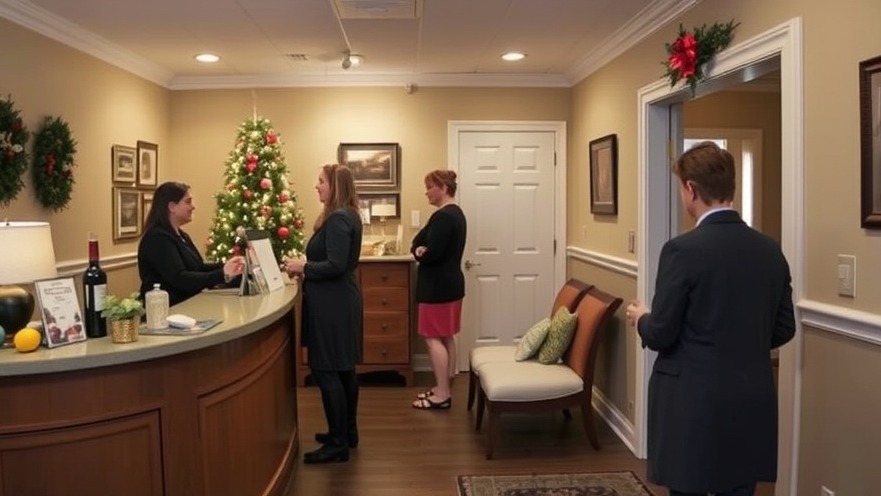
Why Spas Struggle with Seasonal Highs and Lows
Every spa owner knows the feeling. December rolls around and suddenly the phones won’t stop ringing.
Gift cards are selling fast, couples are booking holiday packages, and your treatment rooms are full from open to close.
Then January hits, and it feels like someone flipped a switch. The rush is gone, the calendar looks bare, and the energy just isn’t the same.
This feast-or-famine cycle is one of the hardest parts of running a spa. The busy times feel wonderful, but the slow times can be stressful for both owners and staff.
The good news? There are proven ways to even things out so you don’t feel like you’re riding a financial rollercoaster.
Let’s look at how successful spas across the country are planning ahead, building consistency, and turning “slow season” into what some call “strategy season.”
Why Spas Feel the Ups and Downs
Spas naturally follow the seasons. Holidays like Valentine’s Day and Mother’s Day bring waves of bookings. Summer vacations and post-holiday budgets, on the other hand, often create dips.
The International Spa Association reports that U.S. spas brought in $22.5 billion in 2024, with nearly 187 million visits. That’s a strong industry — but those visits don’t arrive evenly. One month may feel packed, while the next feels painfully quiet.
What matters most isn’t avoiding seasonality altogether — that’s impossible. What matters is building systems so revenue keeps flowing no matter the season.
The Turning Points That Changed the Game
Over the past few years, spas have discovered a few strategies that make a huge difference:
Gift cards became gold. Once seen as a simple holiday extra, digital spa gift cards are now one of the most requested gifts of the season. Even better, about one in four people who redeem a gift card are brand-new clients. That means holiday sales can fill treatment rooms well into the spring.
Memberships took off. Borrowing from gyms and yoga studios, spas began offering monthly memberships. Clients commit to coming in each month, and owners gain steady, predictable income. One coach summed it up well: “Every spa should aim for $10,000 a month in recurring revenue. It changes everything.”
Hotels inspired smarter pricing. Dynamic pricing — charging a bit less on slow weekdays and keeping weekends at full price — helps fill quieter slots without cheapening premium times.
The pandemic taught resilience. Spas that had gift cards, memberships, and online retail in place weathered shutdowns better. That lesson stuck: diversity in revenue streams is now seen as essential, not optional.

Strategies That Really Work
So what can you do today to keep your spa steady all year?
1. Build Recurring Revenue
Memberships and prepaid packages give clients a reason to return and give you peace of mind. Whether it’s a “monthly massage plan” or a “six-facial series,” these options guarantee future visits.
2. Treat Gift Cards as More Than Holiday Cash
Gift cards aren’t just quick sales — they’re future bookings. Plan campaigns that welcome new guests warmly and encourage them to book again. A simple “thank-you” offer for first-time redeemers can turn a one-time visit into a loyal relationship.
3. Pre-Book Like a Pro
Train your team to always ask, “Would you like to reserve your next appointment while you’re here?” Pre-booking is one of the simplest ways to avoid empty calendars.
Some spas add small perks — loyalty points, samples, or discounts — for clients who book ahead.
4. Use Smart Pricing
Consider offering mid-week specials or last-minute bundles during slower times. Protect your busiest slots, but make quieter hours more appealing with creative deals.
5. Use Slow Months for Growth
Instead of stressing over downtime, use it wisely. Refresh your menu, train your team on upselling retail, or even update your décor. As one industry coach likes to say: “Slow season is really strategy season.”

What Sets Strong Spas Apart
The spas that thrive through every season don’t rely on last-minute discounts or frantic marketing. Instead, they:
Plan ahead with data. They track occupancy and average spend to know where the gaps are.
Think long-term. Holiday sales aren’t just about December — they’re about filling spring.
Invest in people. Teams are trained to rebook, upsell, and connect with guests year-round.
Stay creative. Seasonal treatments, themed packages, and wellness bundles keep things fresh.
Takeaways You Can Use Right Away
Start small: 30–50 members on a simple monthly plan can cover key expenses.
Launch one strong gift card campaign and pair it with a plan for turning redeemers into regulars.
Make pre-booking a non-negotiable habit for your staff.
Try one mid-week special next month to test response.
Use slow weeks for staff workshops or refreshing your treatment spaces.
Conclusion: Turn Seasonality Into Strength
Every spa will have busy months and quieter months — that part will never change. What can change is how you prepare.
With memberships, gift cards, pre-booking, and smart seasonal planning, you can smooth out the bumps and create steady, confident growth.
As spa marketing coach Daniela Woerner puts it, “Slow season? More like strategy season.”
If you start putting even one of these ideas into action, you’ll feel the difference. Instead of dreading January or midsummer, you’ll be ready — calm, steady, and focused on what’s next.
That’s when your spa stops riding the rollercoaster and starts steering its own path.
 Add Row
Add Row  Add
Add 




Write A Comment